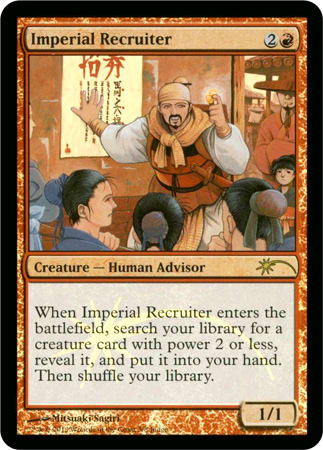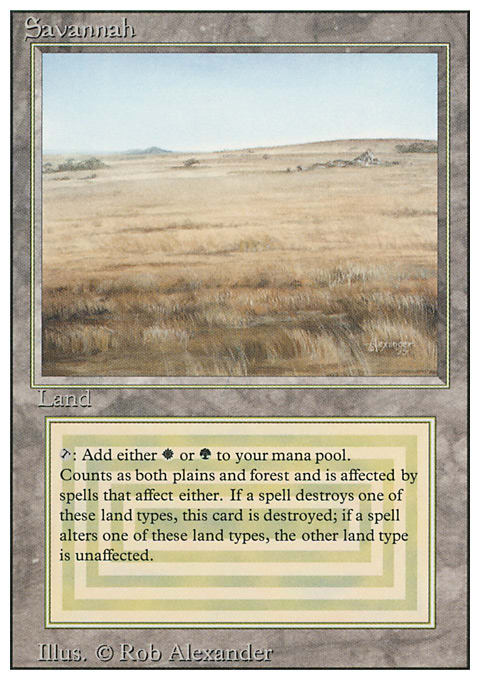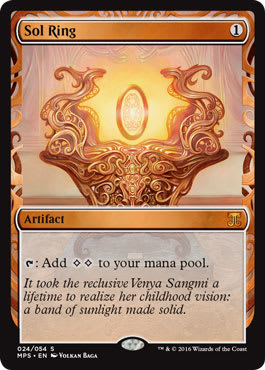With all the changes Magic has undergone in the past year, we have seen a large leap in multiple facets of the game. Competitive players now have access to twice as many major events and a flurry of online coverage to watch in order to step up their games and break through to the Pro Tour. Casual players have been provided with a slew of new products to quench their thirst including a huge push for Commander and in-store events. There is a good chance as a player you can look back at how you used to play Magic or value cards for decks and realize how much you have evolved over the years. As traders, we must also up our games when changes like these occur and learn how to evolve our ideas in terms of how and when we trade. This week, I want to talk about what I have been doing in the recent years to cope with the changes in the Magic multiverse, both at major events and the store level.
Major Events
For anyone who has made at least a few Grands Prix this year, it is quite noticeable how many more floor traders there are at each event. Not only are there more traders attending events, there are significantly fewer players at most events since there are now twice as many chances to attend. Not only are there twice as many Grands Prix now, there are also competing events such as the StarCityGames 5Ks, which are held almost biweekly. As a trader, this does give you more opportunity to attend such an event, but it’s at the cost of a great deal of trades at each one due to the downturn in attendance.
This doesn’t mean you shouldn’t be attending every event you can to seek trades and sell cards, but it does mean you should be more selective in which events you do make it to. The easiest way to plan out your schedule is to take advantage of one of my favorite sites: MTGmom.com. On that site, you can view everything from the basic TCGplayer 1K all the way to Pro Tours and be able to create a schedule that allows you to maximize events while minimizing travel expenses.
Beyond knowing which events you are going to attend, it is also a great idea to find a local group of players who are serious about traveling. This may seem like a no-brainer, but I have found in the recent years that with the increase in events, many new players are breaking into the competitive scene since it is far more accessible now to the average guy who can’t spend hundreds of dollars every week to jet to the next Grand Prix. Having a local network of players who communicate regularly allows you to easily set up rides and rooms to any major event. Jason Alt wrote an article about exactly that on GatheringMagic a few weeks ago in which he talked about a few local groups that stay in contact through a small forums board. Here is a link to that article for anyone who may be curious or who may want more details regarding how to go about making such a site.
So now that we have the pre-gaming out of the way, let’s talk a little about exactly what to look for going into Grand Prix today as opposed to a few years ago. Before the major changes, Grands Prix were the places to be as a trader. This is twofold because not only did Grands Prix have higher attendance, there were also far fewer floor traders at each event, meaning you weren’t spending half of your day trading with people who were trying to use high-end pricing on their cards and eBay on yours. Before I move on, I want to state that this is not floor trading, this is terrorizing. I talked about this a little in last week’s article, but you don’t have to make insane lopsided trades to make a profit. In fact, anyone who tells you that is how you floor trade is probably doing it wrong and has little to no actual insight as to how this process works. I will talk a little more about the shop-level aspect of this later, but at major events, your goal should be to obtain cards for back home. This typically means bringing back hard-to-find cards in your local area such as dual lands and Legacy staples, so prioritizing cards is key. This doesn’t mean you have to tell someone his dual land is worthless, but instead, take advantage of the tools you have at your disposal to make a smart and fair trade. If you use StarCityGames prices or those of other retail sites when acquiring high-end cards, you will probably be making a trade in your favor since that dual is probably not that much cheaper on secondary sites such as eBay. Turning your low-end Standard cards into duals and other Legacy staples can in turn allow you to take those cards home and reverse the process using sites like eBay to obtain a fair trade since the Standard cards you will then be picking up are a fraction of the price while the dual is not that much cheaper. This allows you to use a legitimate pricing scale from which anyone can value his or her cards, and at the same time, this process still allows you to make money over time. Using known factors and price scales can allow you to be fair in trades and still come out ahead.
I will talk more about major events in future articles, as I think it is a topic that cannot be covered enough, but for now, I will move on to smaller venues since that is where I have been finding most of my money being made as of late. With all of the major events cropping up everywhere, I think it is very important as a floor trader to diversify your crowd and traverse into the local game stores more often.
The Local Scene
Most floor traders take their local store scenes for granted when it comes to making money and procuring cards, but truly, it is the bread and butter for any true floor trader. Being able to bring back cards from major events allows you to provide for and grow your local area while still gaining value to take back to the Grands Prix. Beyond that obvious interaction, there are also some other tricks you can use to both expand your local play group and profit. Getting new players into formats other than Standard is a great idea if you can provide them with the card stock. Bringing back dual lands and Commander staples at reasonable prices provides your local players with ways to break in without having to buy everything online. If they do want to spend money, you can hope they will buy from you since you can be more competitive with your prices and they can see the cards firsthand so there are no discrepancies in grading. This saves them money on shipping cost and provides you with another outlet that helps pay the bills. If you build the trust of your local group, you will find yourself being referred to their friends, and they cycle will continue until you have a good customer base. This also gives you a way to buy cards since just as often as players want cards, they are also looking for cash for those unused Standard cards from the previous format. Truly getting in with your local crowd has become a far more important part of the trade game, and it’s something I feel most new traders still haven’t begun to grasp.
Another great way to make some money where you may not have suspected is actually within the local stores. I have a good standing relationship with most of the shop owners in my area, and I work with them whenever I can to help both their tournaments and player bases. You have to understand and respect the fact that these men and women are letting you come into their stores and peddle your goods without all the overhead they have to pay, so be generous in giving back, and you will find that the mutual respect and relationship can be beneficial for both of you.
One last thing I want to cover about local stores before I depart this week comes after you have found that neutral ground and trust each other enough to work together. Many store owners may not have regular access to power and duals or may not have enough of a crowd to feel comfortable shelling out the initial cost to bring them into the store. I like to bridge this gap by providing a service that can be beneficial for both of us by selling high-end cards on commission through local stores. Letting a store have 10% of a card just for the small amount of case space can make their showcase look desirable and at the same time provide them with some free income while testing the market. This is also beneficial for you because it allows you to move your cards at 90% of retail while at the same time building a relationship with your local game store.
I could talk for hours about the small interactions that have shifted over the years, but these are the main factors of change I have experienced since the major increase in events. So many new traders are flooding the market that major events are becoming less and less worth the time and effort, which has shifted more of my focus to the local scene. Learning how to adapt and evolve is the key to success in any business, and floor trading is no different. Thanks for reading, and if you have any comments or questions, as always, feel free to drop me a line on here or Twitter. Stay tuned next week as we begin spoiler season and I start the inevitable process of sifting the bulk from the gems.
Ryan Bushard
























